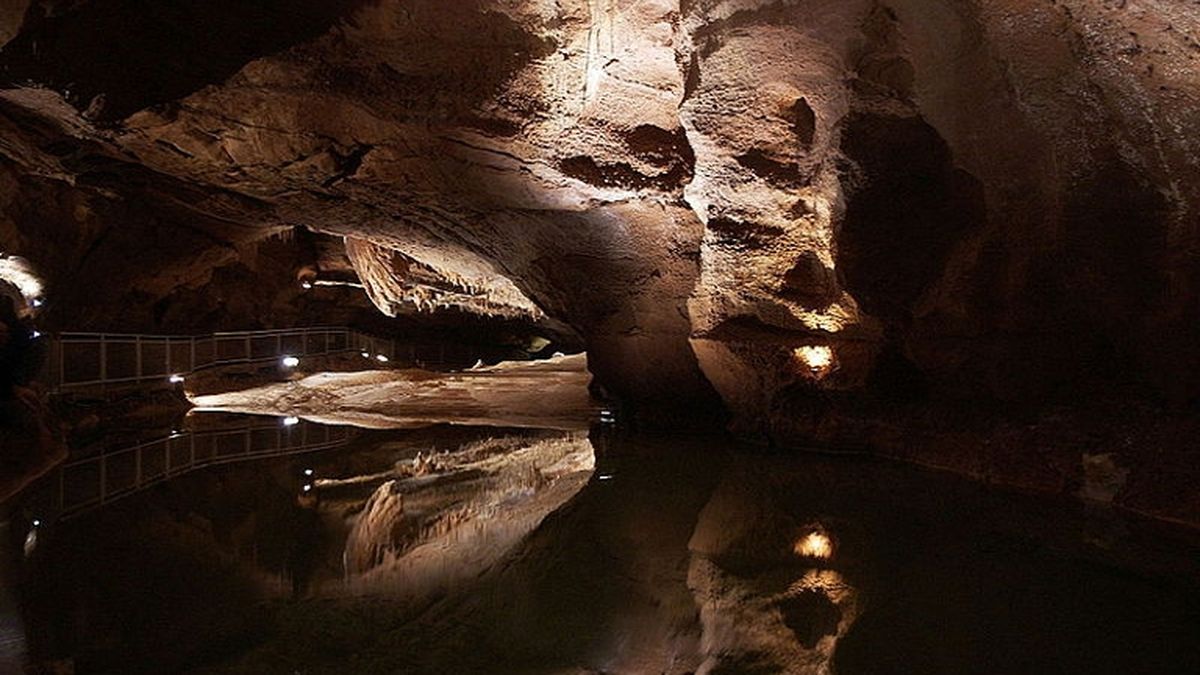 Inside the cave | ©Traumrune / WikimediaCommons / CC-BY-SA
Inside the cave | ©Traumrune / WikimediaCommons / CC-BY-SAA clay plug
The departement of Lot is full of caves, chasms and beautiful natural curiosities… After Padirac, here’s Lacave and its cave!
Neither the speleologist and archaeologist Armand Viré, nor anyone else should have discovered this cave of Lacave, remaining inviolated since centuries...
In fact, Viré made a working site bottom of the cave, in 1904: here, a 90 metres deep and 6 metres in diameter chasm.
At the bottom of the chasm, several galleries existed, dug by an ancient underground river.
At the end of those galleries (Viré knew there were several galleries and he wanted to reach them), he found a ″clay plug″.
He thought the river didn’t stop here: it probably went on towards the valley!
Dynamite!
So, Viré started to look for a cave linking the valley and the chasm. The cave of Jouclas, he bought for next to nothing, served him as a starting point.
Jouclas was the entrance of the future caves of Lacave.
In the past, it was a kind of cellar in which people celebrated the Mass, because in 1902 the church of Lacave was under reconstruction!
Besides, when they raised the altar in the cellar, they found the first archaeological discoveries. But nothing significant...
So, from the cave of Jouclas, Viré dug the mountain with dynamite, for a year. He succeeded in digging a 520 metres long tunnel!
In 1905, he finally found the caves of Lacave. He started the first excavations in the cave of Jouclas, the place where the temporary church was set.
They found animals bones, small flint weapons and jewels made of animals teeth. And the exploration began...
Lunch with an elephant and a spider
Viré and his colleagues get down. They ate their sandwiches in a room nowadays known as ″Lunch Room″! Then, they saw lots of amazing concretions.
• The Bourdon (″Big Bell″).
• The Babel Tower, a kind of high and big block that deserves its name.
• The Baptistery with a cup shape.
• The Tarasque room with his monster’s head, a kind of big dragon famous in Provence.
• The 3 Parcae, then the Palm-Tree
• Then the Elephant room with its pachyderm grazing the rock… we also have concretions with ″spiders legs″. The climax of the visit is the Marvels room, a vast and dark place with phosphorescent rocks. Whoa, truly amazing! Impressed, Viré and his friends nicknamed their discoveries ″the Marvellous″…
